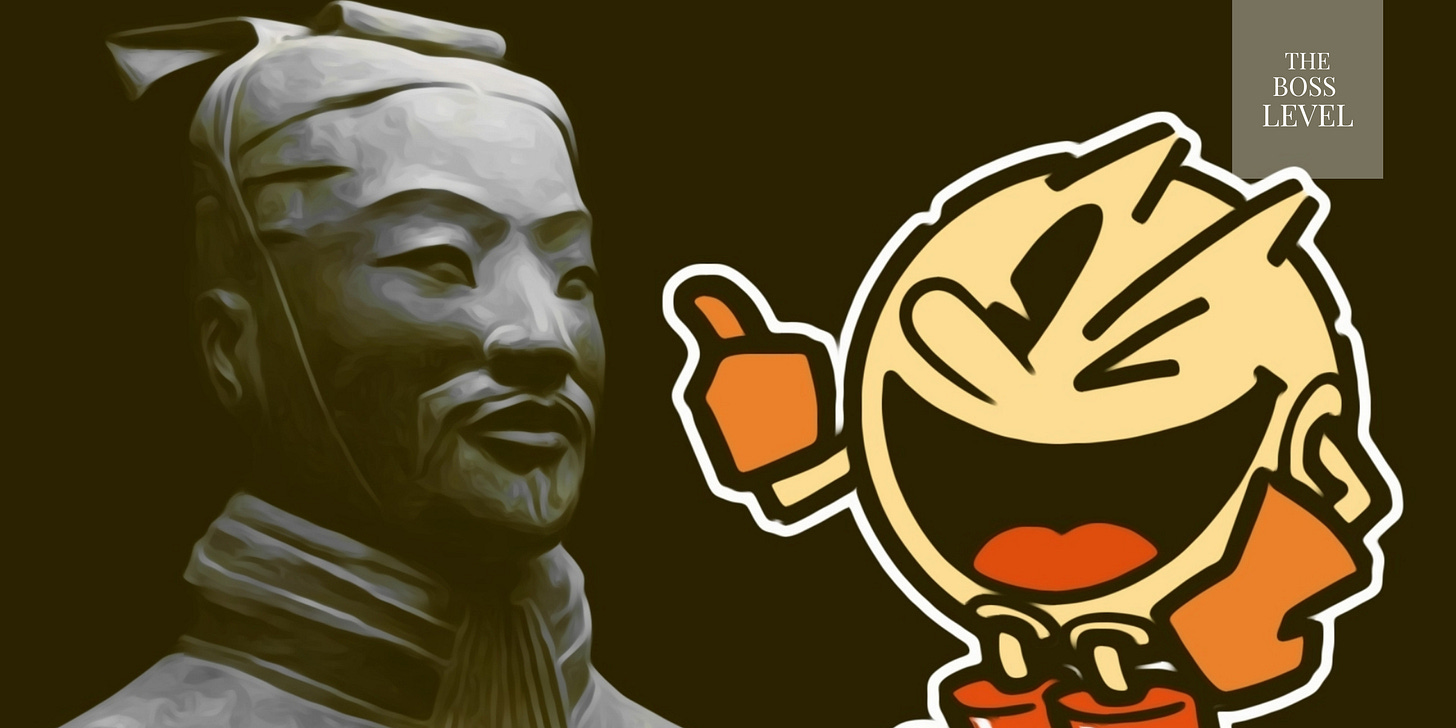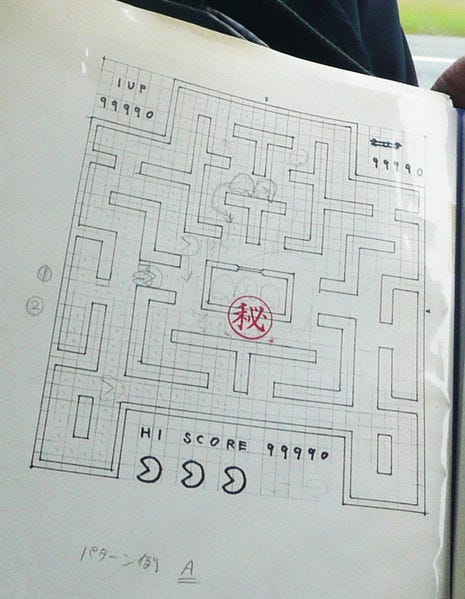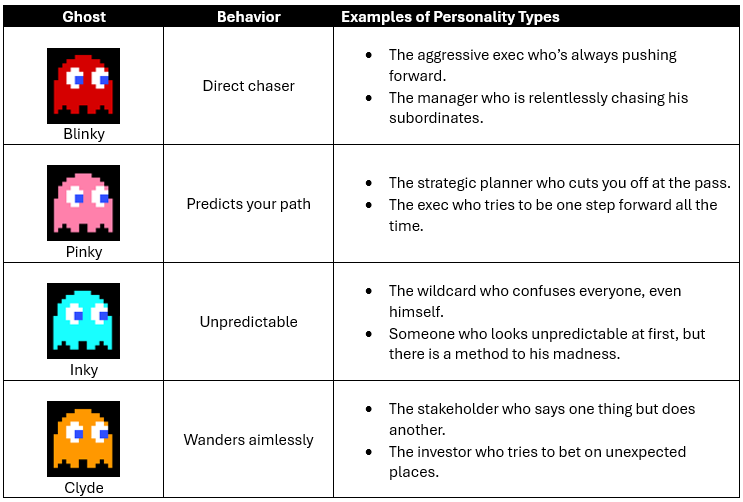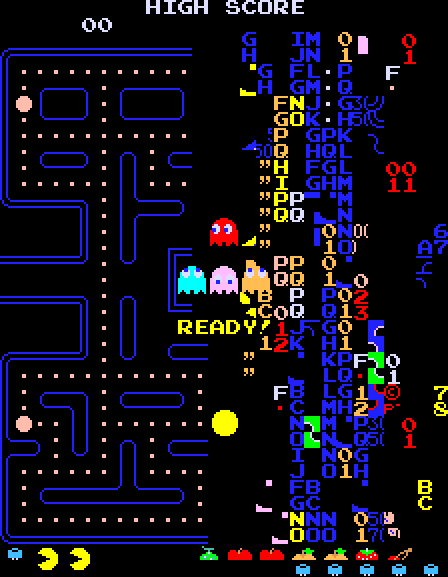9 Lessons Pac-Man Taught Us About Sun Tzu's The Art of War
What a 1980s arcade game and a 2,500-year-old war manual taught me about surviving chaos and leading with intent
“The art of war is of vital importance to the State.” – Sun Tzu
The same can be said of Pac-Man to video games.
But what makes Pac-Man so compelling? That tired question’s been answered in every way imaginable since its release in 1980, from game design breakdowns to cultural essays. So instead of rehashing all that, let me offer something different: a personal take on my fascination to this adorable yellow ball.
When I was a kid, two of my favorite things were reading and wasting hours inside the sterile, digital corridors of Namco Museum on PSX (yeah, I was a very fun kid to hang out with). I must’ve played Pac-Man a thousand times there, always chasing a higher score, always getting cornered by Pinky, always hungry to get back for more.
Between sessions, when I wanted to distract myself with things outside the screen, I’d sit down and read. Most of my time was dedicated to game magazines and old Agatha Christie novels, at least until my teenage years when I got gripped by a book that completely changed the way I see the world: The Art of War by Sun Tzu, courtesy of James Clavell’s translation. It was oddly poetic and kinda self-help oriented in some parts, but even then I could tell: those lines weren’t just about war. They were about strategy. About life.
Over the years, I’ve consistently returned to both — Pac-Man for the fun, The Art of War for the wisdom.
And somewhere along the way, it hit me: there are more similarities between these two than you’d expect.
And that was brought me to write this essay today.
This isn’t just a list of game mechanics or war tactics. It’s a reflection on how the teachings of a 2,500-year-old Chinese general helped me better understand my favorite video game character and how those same teachings can help you navigate projects, careers, and high-stakes meetings like a Power Pellet-charged tactician.
In the end, I hope to make you see Namco’s yellow mascot as a source of inspiration to your daily battles.
With that out of the way, let me be your guide through these curious parallel and the surprising wisdom hiding inside those neon mazes.
1. Mastering the Terrain and the Rules of War
“The different measures suited to the nine varieties of ground, the expediency of aggressive or defensive tactics, and the fundamental laws of human nature: these are things that must most certainly be studied.” – Sun Tzu
Pac-Man doesn’t survive by accident. He survives by mastering the maze.
The more you play, the more you memorize its details — how the tunnels connect, where the corners offer a quick escape, where the Power Pellets are waiting. The map never changes, but the way you move through it determines whether you win or get sandwiched between Blinky and Clyde.
This is Pac-Man’s battlefield. And as Sun Tzu makes it clear countless times, if you don’t understand it, you’ve already lost.
In the real world, the “maze” might be your company structure, your market, or even your project’s stakeholder map. You don’t charge forward without knowing the escape routes or which hallway leads straight into an ambush.
Smart leaders don’t just execute plans. They read the layout first.
Sun Tzu layered these preliminary analysis in 7 questions every general should ask beforehand:
Which of the two sovereigns is imbued with the Moral law?
Which of the two generals has most ability?
With whom lie the advantages derived from Heaven and Earth?
On which side is discipline most rigorously enforced?
Which army is stronger?
On which side are officers and men more highly trained?
In which army is there the greater constancy both in reward and punishment?
In the case of leaders dealing with complex projects, new clients or unexplored markets, we can summarize those analysis in 3 preliminary questions that also apply to a Pac-Man match:
What are the rules here?
Who has power, and where are they positioned?
Where can I find momentum, and where will I get cornered?
Whether you’re clearing pellets or navigating office politics, the principle holds: know the terrain, and you’ll have the advantage you need to move forward with confidence.
💡 Bottom Line: Understand your environment before making your move. Terrain awareness is tactical power.
2. Knowing Your Enemy and Yourself
“If you know the enemy and know yourself, you need not fear the result of a hundred battles. If you know yourself but not the enemy, for every victory gained you will also suffer a defeat. If you know neither the enemy nor yourself, you will succumb in every battle.” – Sun Tzu
One of the most iconic things about Pac-Man is that each ghost has a distinct personality, and those personalities shape their movements.
In the original Japanese version, this was made even more obvious. Their names weren’t just quirky labels, they hinted at their behavior:
These nuances got somewhat lost in translation when they became Blinky, Pinky, Inky, and Clyde, but the behaviors remained consistent. I won’t get too deep into the pathfinding algorithms (unless you really want me to nerd about it), but here’s what matters: once you understand how each ghost moves, the entire game changes.
If you treat them all the same, you’ll get cornered. But if you anticipate their patterns, you can route around them, exploit openings, or even set traps of your own.
It’s the same in business and leadership: not every competitor, manager, or client plays by the same rules. Some pursue relentlessly, others wait to ambush. Some create chaos, others don’t know what they want. And since each player will excite distinct parts of your psyche, you’ll react to each one of them in different ways.
Your job isn’t to outrun everyone, it’s to understand them and understand how you act with them.
The more you study their patterns, the more strategic your decisions become. Whether you're navigating a tough stakeholder or a rival department, the key isn’t brute force, but behavior-based strategy.
With that in mind, let’s reinterpret those ghost types inside a corporate battlefield:
This is just an example, but a valuable one. Studying the players in the board and how you act with them will help you to succeed in a daily basis.
💡 Bottom Line: You can’t treat every threat the same way. Learn how they move and how you react to them, and you’ll always know how to respond.
3. Use Timing to Your Advantage
“Move only when you see an advantage. Use your troops only when there is something to be gained. Fight only when the position is critical.” – Sun Tzu
For most of the game, Pac-Man is outnumbered and on the run. Four enemies, no weapons, only wits to escape them and eat the pellets on the screen.
But everything changes the moment he eats a Power Pellet.
Suddenly, the tables turn. The ghosts who chased him seconds ago now scatter in panic. That brief window of vulnerability? That’s the opportunity you need to take.
The best players don’t waste it. They maximize it by chaining ghost combos, clearing risky corners, and pushing their score as far as possible before the tide shifts again and they’re back to chase mode.
Needless to say, timing is everything.
In business, it’s easy to assume bold moves require bold energy. But often, the smartest leaders are the ones who wait, who observe, who prepare, and who act only when the timing gives them the edge.
Whether you’re launching a new product, making a career shift, or pitching a risky idea, it’s not just about having the power. It’s about knowing when to use it.
💡 Bottom Line: When opportunity strikes, don’t hesitate. Until then? Observe, prepare, and move with precision.
4. Know When to Chase an Opportunity
“A general will win by knowing when to fight and when not to fight.” – Sun Tzu
You just grabbed a Power Pellet. The ghosts are on the run. It’s payback time.
But if you chase too long, the warning sounds shift. The ghosts start to blink. The power fades. Suddenly, you’re not the predator anymore. You’re cornered, and you didn’t eat all the ghosts to score the highest points you could from a single Power Pellet.
Smart Pac-Man players know better. As implied in the previous lesson, before you eat a Power Pellet, you guide the ghosts into a position where you can line them up and take them out efficiently. You go after the ones you can reach in time. You know when to strike… and more importantly, when to back off.
Timing is one thing. Pacing is another. That’s why good Pac-Man players learn to hold onto their strongest tools for the moments that truly matter: when all ghosts are at their reach.
It’s no different in the professional world:
Blow your entire budget on a flashy launch, and you might not have the runway to scale.
Burn through your team’s energy too early, and you’ll hit a wall before the real challenge even begins.
Spend all your stakeholder goodwill on one decision, and you’ll struggle to get buy-in when it really counts.
The best leaders don’t just ask, “Can we do this?”
They ask, “Should we?”
💡 Bottom Line: Every opportunity has a cost. Be selective. Focus your energy where it makes the biggest impact and leave the rest for someone else to chase.
5. Conserve Your Resources
“Thus it is that in war the victorious strategist only seeks battle after the victory has been won, whereas he who is destined to defeat first fights and afterwards looks for victory.” – Sun Tzu
It’s tempting to grab everything in sight when you're playing Pac-Man. Pellets, Power Pellets, fruit bonuses… clean house as fast as you can, right?
But smart players know better: grabbing Power Pellets when one is still active gives you less points. Eat Power Pellets too early and you are left exposed, with less chances of achieving a higher score.
This lesson pairs perfectly with resource management. It’s not just about conserving power, it’s about deploying it with purpose.
In business, this shows up as:
Saying yes to every project, even when your team’s already stretched thin.
Chasing flashy partnerships that look good on paper but drain your energy.
Trying to be everywhere at once and ending up with little to show for it.
It’s not cowardice to retreat from a bad opportunity or wait for the right one to emerge. On the contrary, that’s strategy.
Early in my career, I led a product launch where we poured everything into the kickoff — budget, internal hype, senior leadership attention. We wanted a big bang. And we got it. But three weeks later, when real adoption challenges surfaced and the rollout hit snags, we had no gas left in the tank: no goodwill, no stakeholder excitement, no time buffer.
We’d burned all our Power Pellets too soon.
The best strategists don’t use everything at once. They build reserves and spend them with intention.
So the next time you’re planning a long project or high-stakes initiative, ask yourself: when do I actually need my Power Pellets?
That’s how you survive long enough to win.
💡 Bottom Line: Don’t go all-in on turn one. Conserve your resources, so you’re ready to strike when it truly counts.
6. Use Distraction to Create Openings
“All warfare is based on deception. Hence, when able to attack, we must seem unable; when using our forces, we must seem inactive; when we are near, we must make the enemy believe we are far away; when far away, we must make him believe we are near.” – Sun Tzu
One of the most underrated strategies in Pac-Man is misdirection.
Sometimes, the best move isn’t charging forward — it’s acting like you’re about to.
You draw the ghosts toward one side of the maze, only to slip through a tunnel and double back. You look like you’re trapped, but you’re actually setting them up. And when it works, it’s beautiful.
This kind of maneuver only works when the ghosts believe you're in trouble — and that illusion creates the space you need to reach a Power Pellet, clear a path, or snag a bonus fruit.
The same tactic works outside the arcade.
In business, strategic communication or staged rollouts can create breathing room or redirect attention:
Announce a phased approach to a big change, then execute the real pivot when the team’s aligned.
Focus public messaging on one initiative to deflect pressure from the internal shift that’s actually happening behind the scenes.
Set a controlled fire to contain a larger one.
Hollywood pulled off a masterclass in this with Split (2016). For nearly the entire film, it’s framed as a standalone psychological thriller… until the final moments, when Bruce Willis appears and it’s revealed to be a secret sequel to Unbreakable. M. Night Shyamalan used misdirection to catch audiences off guard and reignite an entire franchise without the burden of hype or expectation.
That reveal wasn’t accidental. It was strategic sequencing.
That’s why, when put in good use, misdirection becomes less about hiding the truth and more about sequencing the truth in a way that creates space for real moves.
💡 Bottom Line: Sometimes the best way forward is through a well-timed feint. If your opponents expect one thing, give them another — and move where they least expect it.
7. Adapt or Die (Literally)
“Amid the turmoil and tumult of battle, there may be seeming disorder and yet no real disorder at all. Amid confusion and chaos, your array may be without head or tail, yet it will be proof against defeat.” – Sun Tzu
At first, Pac-Man feels manageable. The ghosts are slow, the paths are open, and everything seems under control. But then the pace picks up. As the ghosts accelerate, the maze starts to feel smaller. Mistakes get punished faster. Escape routes disappear before you can react.
By level 10, don’t expect to take the same paths you did in level 1 and get the same results.
Pac-Man follows a clear set of rules, and each ghost has predictable behaviors. But as the game speeds up, it demands constant adaptation. You can’t just memorize patterns and coast. You have to adjust to new speeds, react to evolving threats, and rework your route on the fly. Strategy becomes survival.
The same is true in business.
Markets shift. Competitors pivot. Tech stacks change. Team dynamics evolve. The laws of human nature may remain the same, but if your approach stays static, it doesn’t matter how good your plan looked at the start. You’ll eventually get cornered.
Adaptability isn’t just about reacting to change. It’s about building systems that expect it:
Flexible roadmaps
Contingency budgets
Cross-functional teams that can shift focus when needed
As Sun Tzu would say, chaos is inevitable. What separates the ones who win is their ability to find opportunity inside it.
💡 Bottom Line: No strategy survives unchanged. Stay flexible. When the game speeds up, adapt… or get eaten.
8. Your Advantage Is Temporary. Use It Wisely.
“Maneuvering with an army is advantageous; with an undisciplined multitude, most dangerous. If you set a fully equipped army in march in order to snatch an advantage, the chances are that you will be too late.” – Sun Tzu
Power Pellets don’t last forever. When you grab one, the ghosts turn blue and run, but only for a moment. The window is short. The pressure is on. And what you do with that time defines whether you take control… or waste your shot.
Smart players don’t panic or play it safe in those moments. They move fast, line up the ghosts, and make each second count to eat them all.
Because once the music shifts and the ghosts stop flashing, it’s too late.
This game logic applies to our careers as well. Every so often, you get a brief power-up moment:
A promotion that puts you in a room you’ve never been in before
A leadership role on a high-visibility project
A speaking slot, a feature article, or a product spotlight that suddenly gives you attention you didn’t have before
And just like in Pac-Man, that window closes quickly.
Play it too safe? You disappear into the background. Fumble the opportunity? Someone else will clean up. But if you’re ready and have a strategy at hand, you can use that moment to level up.
Powered-up moments don’t just give you permission to act. They multiply your chances of success when used with intent.
💡 Bottom Line: Every advantage is temporary. When your moment comes, don’t hesitate. Use it boldly and turn momentum into lasting progress.
9. The Game Never Really Ends
“There is no instance of a nation benefiting from prolonged warfare.” – Sun Tzu
Pac-Man doesn’t have an ending… well, not really.
Sure, there’s the infamous Level 256 bug (a.k.a., the kill screen), but in theory, the game is designed to go on forever. The ghosts get faster. The pressure ramps up. The margin for error shrinks. But there’s no final boss. No credits. No trophy. Just you… and a loop that keeps getting harder.
Sound familiar?
In business, there’s no true “game over,” either. You launch a product, then support it. You hit your quarterly goals, then reset for the next.
You get promoted — then inherit a new maze with faster ghosts.
The point isn’t to finish. The point is to endure.
That’s what makes this lesson so valuable: most professionals burn out chasing the idea that one more win will finally bring peace. But the real pros? They train for the long run. They build habits that scale. They protect their energy. They know that every level has its ghosts, and every victory leads to the next challenge.
So pace yourself. Play smart. Don’t just sprint through this stage. Prepare for the rest of the game.
💡 Bottom Line: There’s no final boss. No perfect run. Just rising difficulty and new challenges. So stop playing to finish and start playing to last.
Wrapping Up
When I first stumbled onto The Art of War, I never imagined it would share so much in common with a yellow dot being chased around a maze by colorful ghosts.
But here we are.
One is a military text written by a legendary Chinese general. The other is one of the simplest, most iconic video games ever made. And yet, both are built on the same foundation: read the field, study the players, act with intent, and endure the chaos.
From knowing the terrain and mastering timing to conserving resources and learning when to strike, Pac-Man became more than a game. For me, it’s a crash course in tactical thinking.
The ghosts never stop coming. The pressure never really lets up. But if you stay sharp, stay aware, and keep adapting, you can survive and keep leveling up.
So the next time your project hits a wall, your career takes a sharp turn, or the pressure’s closing in, ask yourself: what would Pac-Man do?
(Well, probably double back through a tunnel, grab a Power Pellet, and turn the game around.)
Now, I want to hear from you: has a game ever taught you a lesson that stuck with you about leadership, work, or life?
Drop it in the comments. I’d love to hear your story.
Let’s keep leveling up, one boss level ghost at a time.













